“Before BOSS, there just wasn’t a wide enough selection of pedals. They kicked it into high gear, eclipsed everything else…” How BOSS changed the soundscape of modern music in five decades
The inside story of how BOSS revolutionized effects. The milestones that led the Japanese firm to the cutting edge of the modern music scene
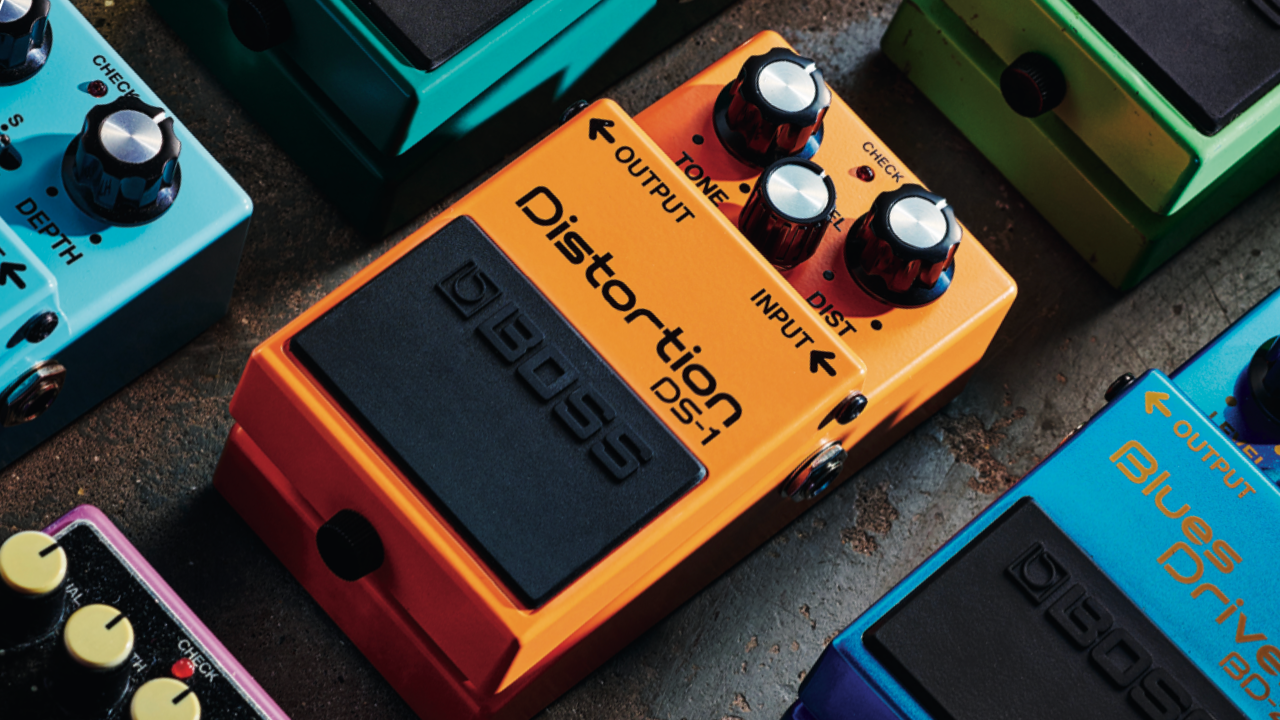
Any show, any stage, any pedalboard, any backline – for more than half a century, BOSS has been the constant strand of DNA in a music scene endlessly shedding its skin. Of course, it is the visionary Japanese company’s nature to look to the future, to the products still to be invented, the technologies as yet untapped and the generations of musicians waiting to make their mark. But as outgoing president Yoshihiro Ikegami reminds us, it is only by reflecting on the road already traveled that this still-questing company can forge ahead.
“Our 50-year history is a testament to our commitment to quality and innovation,” says Ikegami of a journey whose headline statistics include 18 million total units sold and the release of 140 compact pedal models, not to mention the status of the world’s second-biggest amp builder since launching the Katana in 2016.
“It’s a legacy we’re incredibly proud of. While we strive for breakthroughs, we must also cherish our history. Our history is the foundation upon which we build our future. It’s crucial to balance innovation with the wisdom and experience that 50 years have provided us.”
Rewind to the 1960s and the guitar effects scene was the Wild West. If you knew which doors to knock on, and were famous enough to jump the waiting list, then maverick-genius artisans like Roger Mayer could be commissioned to build a one-off pedal in their London workshops. But there was no coherent effects sector, no industry standard, no single manufacturer giving players what they needed to lead the charge for the gathering rock ’n’ roll revolution.
In the States, an exasperated Gibson had discontinued its own fuzzbox, while in Japan, Roland had dipped a toe into the effects market with early units like the AG-5 Funny Cat and AF-100 BeeBaa, but found they were an acquired taste (with the company’s founder and chairman Ikutaro Kakehashi memorably explaining that it was “like trying to persuade a person who has never eaten octopus to try a slice”).
The arrival of BOSS in 1973 changed everything. In those first years, the newcomer existed hand-in-glove with parent company Roland – itself only founded by Kakehashi a year earlier, as the successor to Ace Tone – even to the point of sharing engineers. But while BOSS would rapidly become its own entity, the two firms’ early tag-team creativity would prove key to BOSS’s seminal pedal release of 1976, with the CE-1 Chorus Ensemble pedal underpinned by virtually identical circuitry to Roland’s iconic JC-120 Jazz Chorus amp.
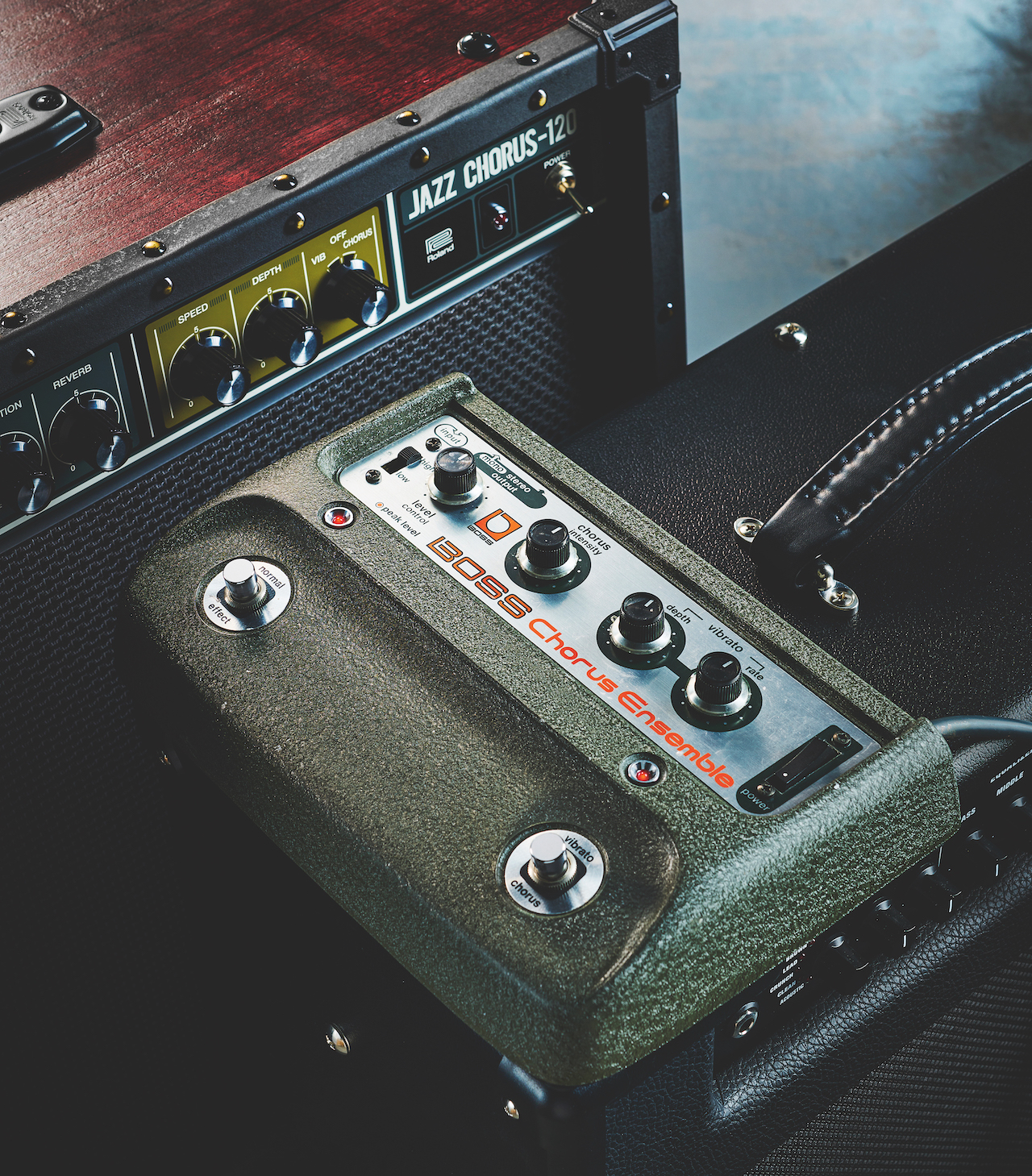
As Kakehashi told The BOSS Book, it was only once the CE-1 had appeared in a photo of jazz great Herbie Hancock that sales ignited. “America is such a big place, it’s hard to find a spark to light the fire. But then, once the fire has been caught, it leads to scorching sales. In just a month, we unloaded stocks of the CE-1 that we’d been stuck with for 18 months.”
Get The Pick Newsletter
All the latest guitar news, interviews, lessons, reviews, deals and more, direct to your inbox!
Even if the company had never made another pedal, the CE-1 would have earned BOSS its place in the gear chronicles. The revelation came in 1977, as the simultaneous launch of its first three compact pedals – in the form of the OD-1 Over Drive, PH-1 Phaser and SP-1 Spectrum – announced the Japanese company’s intentions to systematically perfect every effect on the market (and invent plenty more besides).
“I think we needed the creativity and the manufacturing style of the Japanese to really get effects pedals into the modern world,” reflects Robert Keeley, the highly respected founder of Keeley Electronics.
“Before BOSS, there just wasn’t a wide enough selection and, in my opinion, it wasn’t built as well as BOSS could do it. It took a team of engineers to kinda line out all the effects that were possible. Y’know, different types of drives, phasers, flangers, chorus, echo – BOSS just kinda outlined how effects should be organised and the parameters for each of the sounds. They really kicked it into high gear, eclipsed everything else that was going on. And all those things, they put together in a really great package, obviously.”
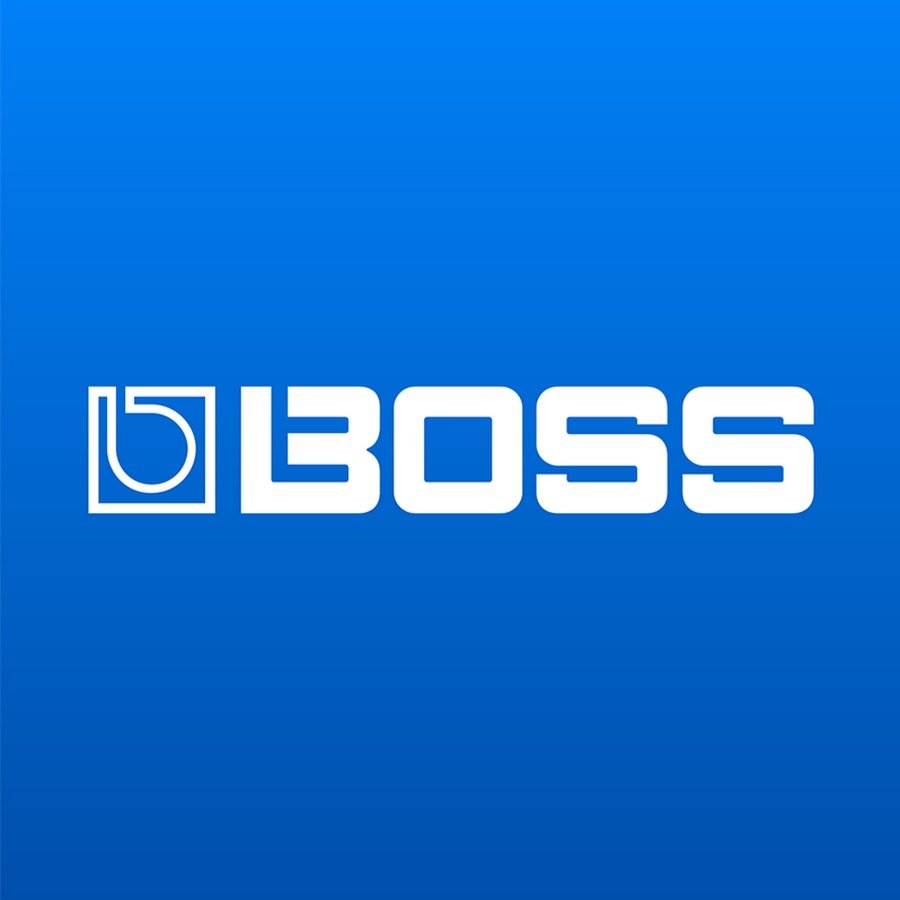
1972: Roland Corporation founded in Osaka, Japan
1973: BOSS precursor, MEG Electronics, founded in Osaka
1976: CE-1 Chorus Ensemble: first BOSS-branded stompbox and world’s first chorus pedal
1977: First BOSS compact pedals: OD-1 Over Drive, PH-1 Phaser and SP-1 Spectrum
1978: DS-1 Distortion (DS-1w Distortion now available in Waza Craft range)
1981: DM-2 Delay (iconic BBD analogue delay)
1983: DD-2 Digital Delay (world’s first digital delay pedal) and TU-12 (world’s first automatic chromatic tuner)
1987: RV-2 Reverb: world’s first digital reverb pedal
1991: MT-2 Metal Zone: million-selling high-gain unit
For BOSS, operation was never an afterthought. Aside from the colour-coding that identified each effect class, those first compacts established BOSS’s enduring calling card of heavy-duty uniformity. Unlike temperamental rival pedals, these units were built on the foundation of an aluminium die-cast chassis, with electronic FET switches that prevented the on/off switching noise and frequent failures of mechanical contacts. For added practicality, the BOSS units featured non-slip rubber bases and footswitch pads and the unprecedented choice between battery or AC power.
“One thing that can’t be overlooked is that BOSS pedals are built like a tank, which meant the pros would tour with them,” says Daniel Steinhardt of That Pedal Show. “I could see the BOSS pedals at the feet of my guitar heroes, the very same ones I could buy from my local music shop.”
As Ikegami points out, those practical features were not the result of any single visionary. “BOSS’s strength lies in teamwork. In the early days, our team worked relentlessly to develop products like our iconic compact pedal. The dedication and passion that went into these early products have become the heart of our product creation process. They put a great deal of thought into creating the best shape, size and everything else. While we’ve made minor improvements over the years, the essence remains the same. Even in the early days, it was a collective effort to shape the company’s future.”
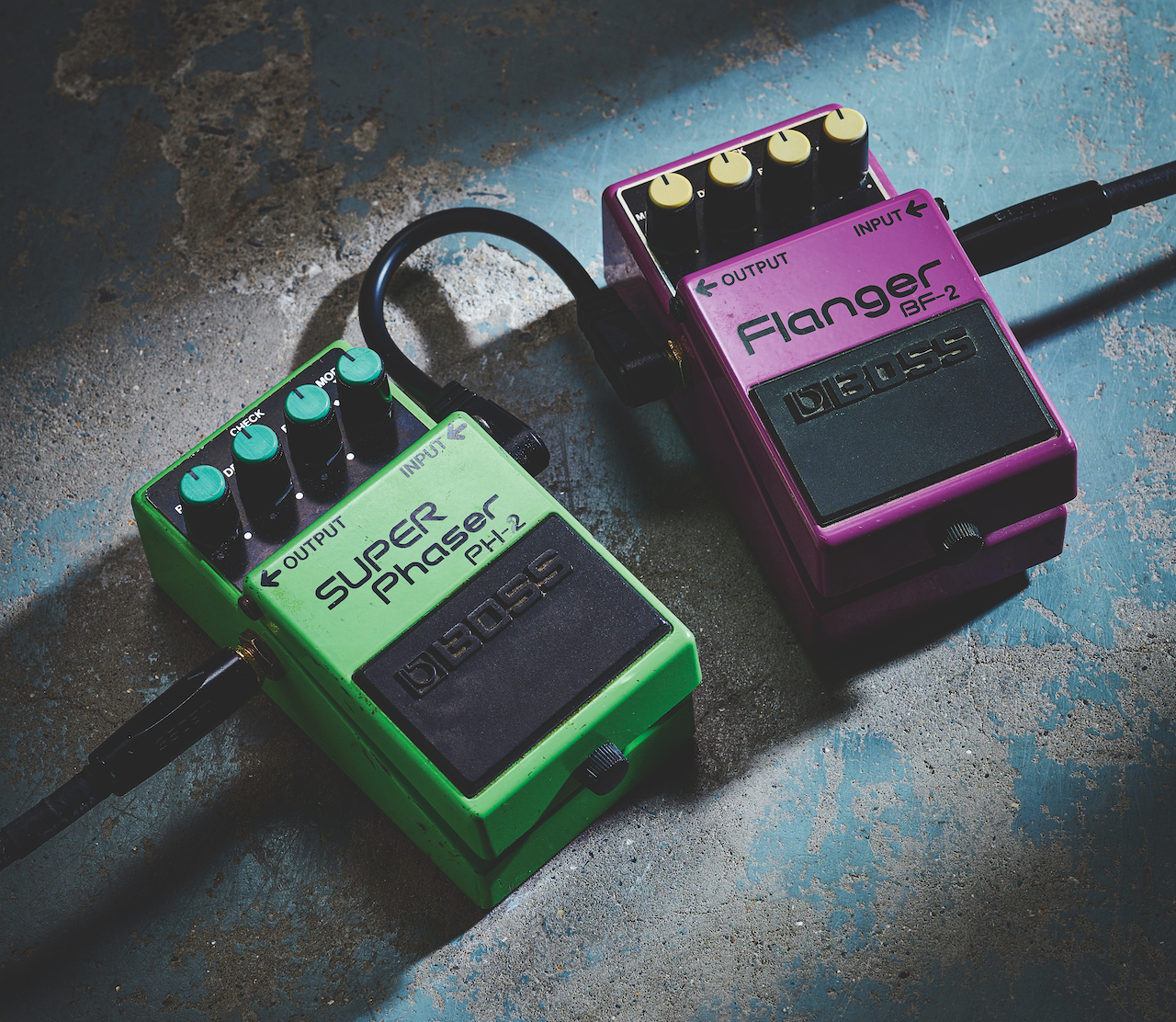
From the vantage point of 2023, that first wave of BOSS pedals feels like a series of big bangs for guitar effects, the tremors still felt in the modern sector. The CE-1, for example, was the first stepping stone towards the Japanese company’s dominance of the chorus effect class, with that pedal’s founding principles still evident in a modern range that includes the CE-2w, CE-5 and CH-1 compacts, alongside multi-modulation units like the MD-200 and MD-500, whose 28 different algorithms are underpinned by state of the art 32-bit floating-point processing.
1995: BD-2 Blues Driver released: influential low-gain design
2001: RC-20 Loop Station: first Loop Station pedal
2007: Fender FBM-1 ’59 Bassman & FDR-1 ’65 Deluxe Reverb Amp
2014: First Waza Craft pedals: BD-2w Blues Driver, DM-2w Delay and SD-1w Super OverDrive
2015: 500 Series pedals introduced to BOSS line-up
2016: Katana guitar amplifier range launched
2019: 200 Series pedals introduced to BOSS line-up
2021: TB-2w Tone Bender: collaboration with Sola Sound
2023: DM-101 Delay Machine, SDE-3000D Dual Digital Delay and RV-200 Reverb
The PH-1 Phaser, meanwhile, was the starting pistol for a modulation effect with its own hardcore following, that first pedal’s DNA still found in the PH-3 Phase Shifter (now massively extended with features like the Rise/Fall modes that allow mindblowing unidirectional phasing). Only a handful of effects fans had even heard of flanger before BOSS developed the BF-1 in 1977 (today, the stereo BF-3 is the global benchmark). Similarly, BOSS’s game-changing DM-1 Delay Machine of 1978 is now saluted as a stone-cold trailblazer. Transmuting the delay effect from tape-based units such as Roland’s Space Echo devices into a more practical stompbox format, it evolved into the DM-2 Delay compact pedal in 1981.
Inspect the modern range and you’ll not only find an updated tribute to the Delay Machine in the form of the DM-101 but also descendants of the mid-80s’ DD-2 and DD-3 (both the Japanese firm’s first digital pedals and the world’s first compact digital delays). It seems that with delay, as with so many of BOSS’s classic products, what goes around, comes around, sweeping up new advocates in every incarnation. As the great Steve Vai once noted of the DD-7: “It’s a beautiful workhorse.”
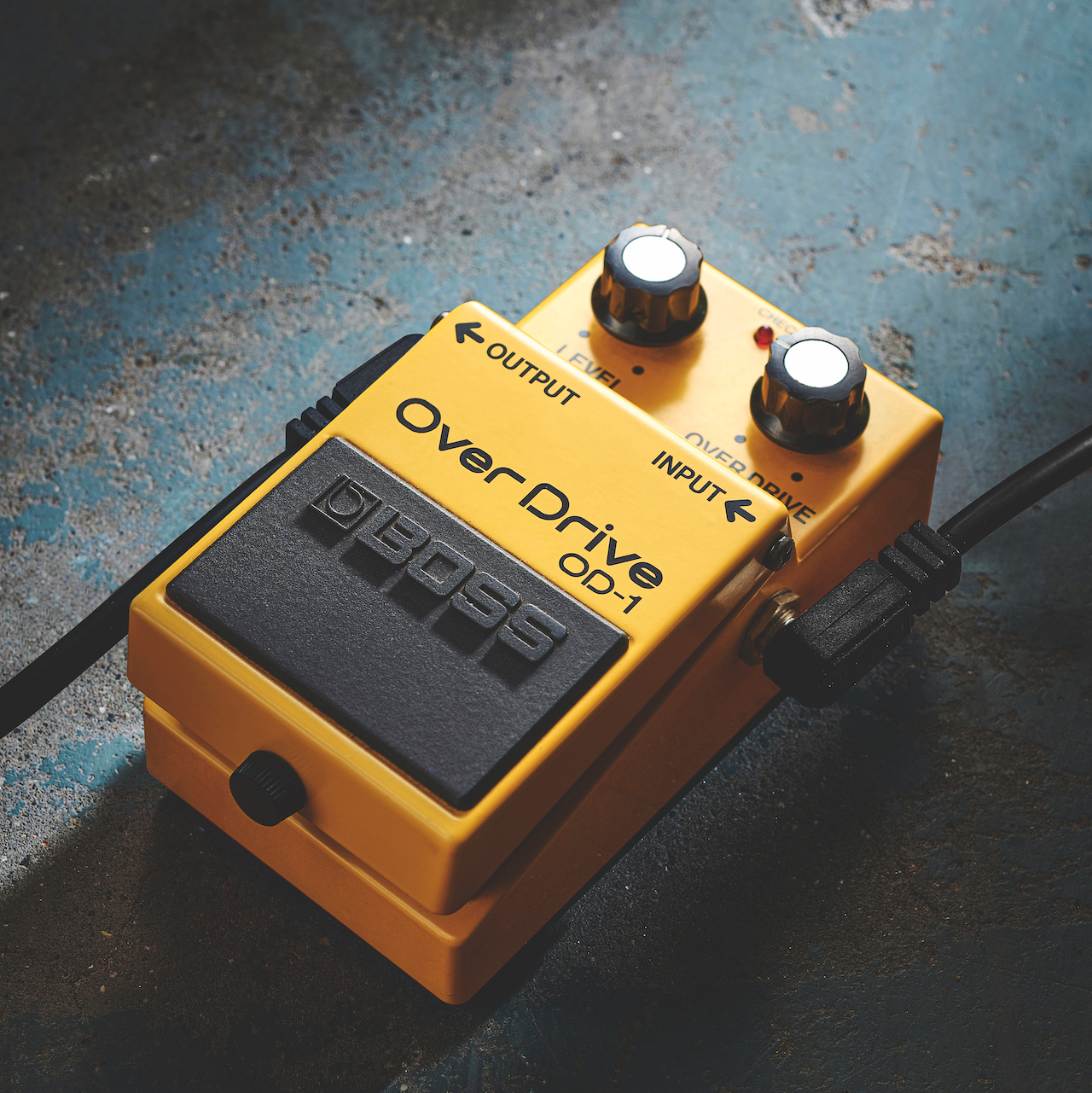
Among those pioneers of 1977, the biggest ripples were felt from the OD-1. For a guitarist to crave dirt in their sound was a notion that went back to The Kinks’ Dave Davies slashing his amp speaker cones, if not before. But when it was unveiled at that year’s NAMM Show, this banana-yellow stompbox represented a watershed release that brought a whole new sound and concept to the table.
Back in the early 60s, the first fuzz pedals had set out to reproduce a novel kind of signal distortion originating from faulty recording gear. Now, the OD-1 finally delivered on the brief of simulating an overdriven amp at more practical volumes while supplying a rich, characterful, harmonic tone that let the nuances of a player’s picking style shine through. Crucially, this new overdrive effect was designed differently to existing distortions: instead of trimming the sine waves equally at the top and bottom of the unaltered signal as they entered the effect circuitry, BOSS’s engineers did this clipping asymmetrically. All the players on the stage needed to know, though, was that the OD-1 sounded incredible. As Steinhardt says: “Most guitarists had one of these in front of them at some point.”
Once again, the original OD-1 was just the start of BOSS’s love affair with grit. As rock ’n’ roll swaggered into a new decade – evolving from the classic rock and punk of the 70s to highly technical hair-metallers and the New Wave of British Heavy Metal – overdrive became an essential seasoning that every band applied differently. Meanwhile, BOSS’s range ran alongside the scene through every twist, supplying a thousand torn-up tones from its spiralling compact line-up.
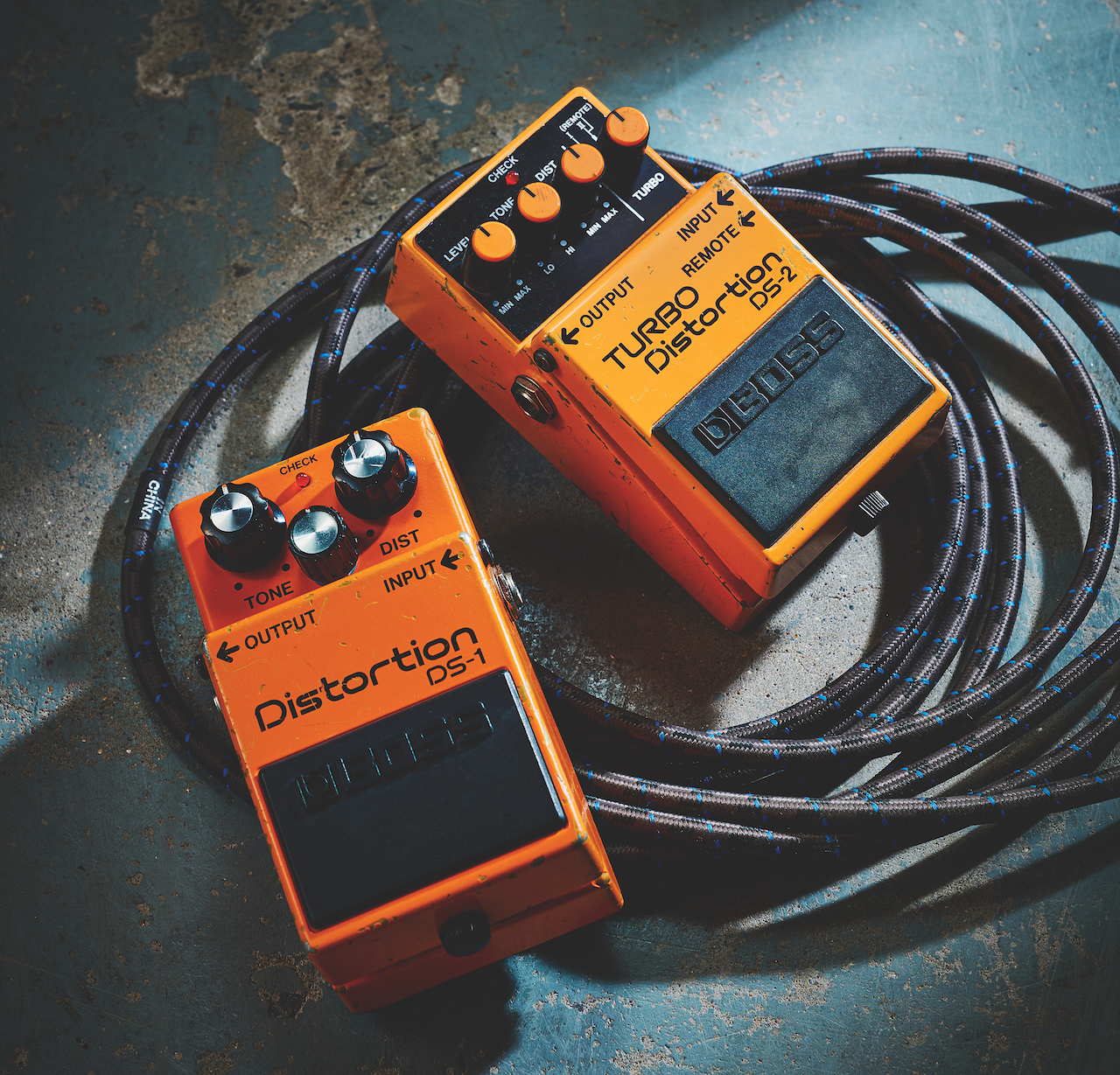
While the OD-1 would remain in production until 1985 (and lives on in the OD-3), players demanding more flexibility jumped at the SD-1 Super OverDrive on its debut in 1981, this latest pedal adding an active tone control to cut or boost treble (it remains in production to this day). Just as seminal was the DS-1, whose knife-through-butter distortion, lengthy sustain, rich harmonics and flow from savage to subtle sounds were made possible by electrically clipping the signal waveform. Famously, Kurt Cobain’s heavily battered and graffitied DS-1 sold at auction last year for $75,000. But budget-conscious players will be pleased to hear it’s still available as the current standard DS-1 – and also as the DS-1w (part of the Waza Craft series).
The DS-1 might be BOSS’s all-time bestseller, but this orange-tinted series boasts another icon in the DS-2 Turbo Distortion of 1987, whose twin modes made it perfect for players who covered both rhythm and lead, and a rig mainstay of stars like John Frusciante of Red Hot Chili Peppers.
As the decade turned, BOSS’s presence remained undimmed. Launched in 1991, and going on to sell over a million units, it only took one look at the jet-black MT-2 Metal Zone to know BOSS’s highest-gain pedal meant business (and while that distinctive midrange scream is indeed all over heavy-mob albums from the period, it was also used by Prince). Meanwhile, for players who wanted to hear every last drop of soul in their fretwork, there was 1995’s BD-2 Blues Driver, its responsive roar evoking the vintage valve amps becoming rarer each year. Green Day’s Billie Joe Armstrong nailed the appeal when he explained that: “I used a BOSS Blues Driver to make the solos punch harder on ¡Uno!, ¡Dos!, ¡Tré!”
Overdrive might be the first effect in many young players’ rigs, but it’s just the tip of BOSS’s remit. During those opening three decades, the firm practically defined every effect on the pedalboard, with releases spanning from 1987’s RV-2 Digital Reverb to 1996’s SYB-3 Bass Synthesiser (both the first of their kind). Even ‘straight-to-the-amp’ purists will bend their own rules with a TU-3 Chromatic Tuner.
Soon, the wisdom gained from all those standalone stomps fused into the inaugural BOSS multi-effects, as the ME-5 of 1988 signposted us towards the mighty processing power of modern-day units like the GT-100 and GT-1000, both loaded with flawless recreations of the greatest amps and effects in the world. As Johnny Marr told BOSS: “You’d be super-surprised how great the drives and distortions are with the COSM modelling technology. This [GT-100] that you can throw in a bag and stick in the boot of your car – only 10 years ago, you’d need a 15 or 20U rack.”

In 2001, as the Japanese firm crossed into the new millennium, its next release actively set the course of the music scene. The sound-on-sound tracking made possible by the original RC-20 Loop Station – pack-leader of the new Twin Pedal series – was initially used by solo guitarists to turn their one-man shows into epic symphonies. But the modern Loop Station range – culminating in the six stereo tracks of the RC-600 – can be found at the feet of vocalists, beatboxers, DJs and more. “I got a loop pedal when I was 14,” says Ed Sheeran, whose stadium-filling career began with the RC-20XL at his feet.
But for every superstar using BOSS, there’s a thousand more passionate up-and-comers relying on this hardware to carry them forward. 50 years since the Japanese company’s touchdown, every sound in your head can be found somewhere within that kaleidoscope of effects, and all of them are waiting at every music store in the world. “Why is BOSS such an important brand in the story of guitar effects?” ponders Daniel Steinhardt. “I think it comes down to two main things: innovation and accessibility. Since I was a kid, I’ve never walked into a music store without finding BOSS pedals available. Regardless of your location, you could easily get your hands on them, and they consistently delivered superb sound.”
As the BOSS story reaches 2023 with another fistful of game-changing gear – including the NS-1X Noise Suppressor, BP-1w Booster/Preamp and pedal versions of Roland’s legendary SDE-3000 rack gear – nobody could deny it’s been quite a half-century. And as Yoshihiro Ikegami concludes, the best way to treat a storied past is as a springboard into the future.
“BOSS’s 50-year history is the foundation on which we stand, and it’s essential to respect and cherish it. At the same time, we must continue to have the courage to seek breakthroughs. Our philosophy should guide us as we explore new frontiers in music technology. The dedication and hard work that have brought us to this point should inspire us to reach even greater heights…”
This month, Guitarist magazine includes a free supplement dedicated to 50 Years of BOSS. Click here to download it as a digital version or here for a 'digital page-turner' on Issu.
Henry Yates is a freelance journalist who has written about music for titles including The Guardian, Telegraph, NME, Classic Rock, Guitarist, Total Guitar and Metal Hammer. He is the author of Walter Trout's official biography, Rescued From Reality, a talking head on Times Radio and an interviewer who has spoken to Brian May, Jimmy Page, Ozzy Osbourne, Ronnie Wood, Dave Grohl and many more. As a guitarist with three decades' experience, he mostly plays a Fender Telecaster and Gibson Les Paul.
“Sonically excellent… we found that it could be a viable substitute for our vintage 1970s pedals”: Hamstead x That Pedal Show Redwing Analogue Stereo Modulator review
“The original Jordan Boss Tone was probably used by four out of five garage bands in the late ’60s”: Unpacking the gnarly magic of the Jordan Boss Tone – an actual guitar plug-in that delivers Dan Auerbach-approved fuzz
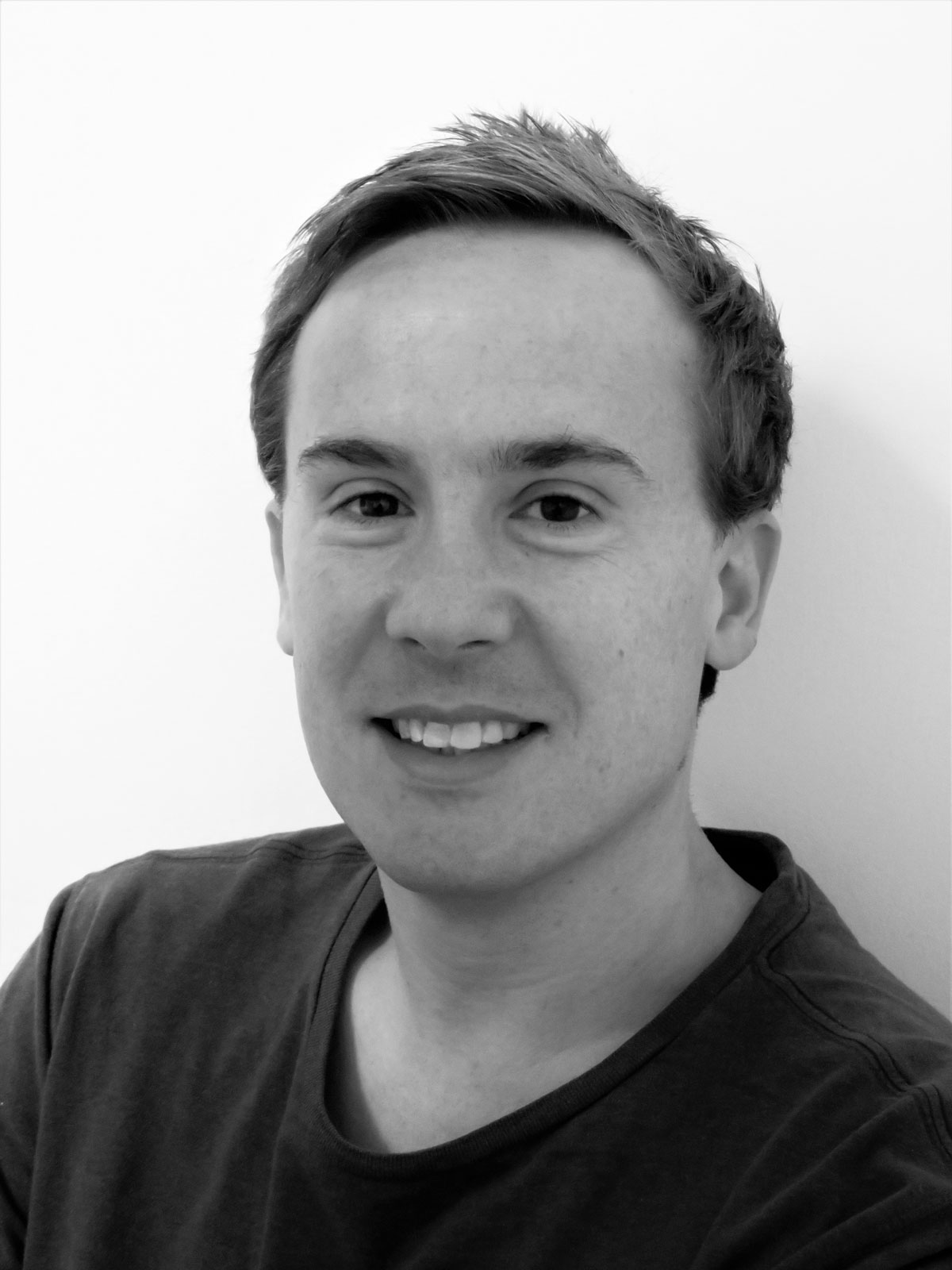



![John Mayer and Bob Weir [left] of Dead & Company photographed against a grey background. Mayer wears a blue overshirt and has his signature Silver Sky on his shoulder. Weir wears grey and a bolo tie.](https://cdn.mos.cms.futurecdn.net/C6niSAybzVCHoYcpJ8ZZgE.jpg)

![A black-and-white action shot of Sergeant Thunderhoof perform live: [from left] Mark Sayer, Dan Flitcroft, Jim Camp and Josh Gallop](https://cdn.mos.cms.futurecdn.net/am3UhJbsxAE239XRRZ8zC8.jpg)




